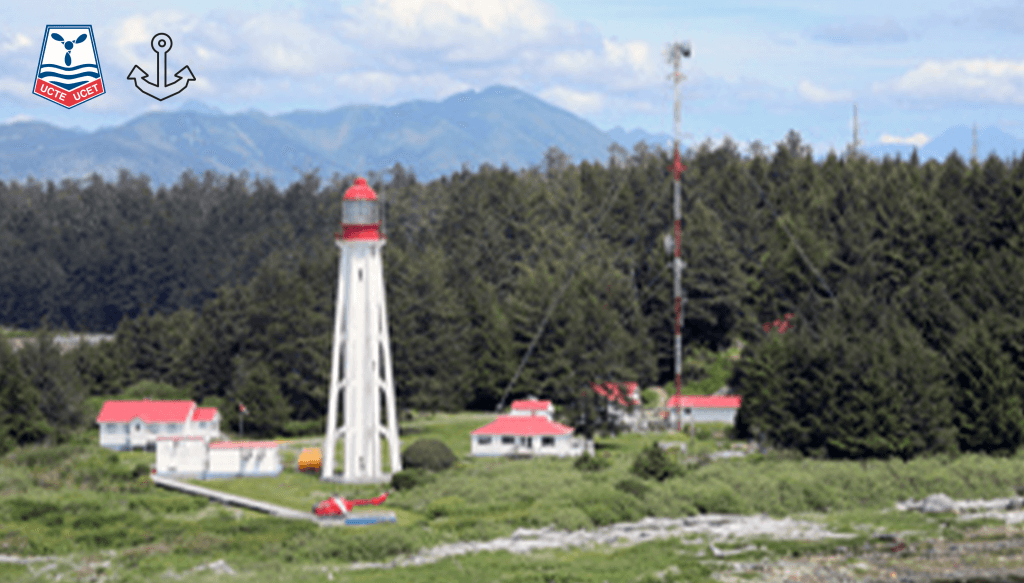The shelling of Estevan Point Lighthouse: A 78-year-old mystery
Canada has not often come under attack. The Americans attacked during the war of 1812. The Irish Fenians nationals attacked after the American Civil War, to capture Canada and trade it for the freedom of Ireland. Then on June 20th, 1942, six months after Pearl Harbor, the Estevan Point Lighthouse on the western coast of Vancouver Island was shelled. The official story has been that it was fired upon by the Japanese submarine I-26. If so, that would make it the first enemy shelling on Canadian soil in 130 years.
On the night of the attack lightkeeper Robert M. Lally, a veteran of World War I and lightkeeper at Estevan Point since 1926, reported at 9:25 pm that he saw a warship on the horizon that fired several dozen rounds in his direction, none of which hit their mark. The first landed on the beach in front of the light which was immediately turned off by Lally. Now in complete darkness the other shells landed behind him. He also reported he saw a submarine and a smaller craft but only the warship was firing. His story was quickly changed by government sources to be a Japanese sub that attacked not a warship. Indeed, the following night American Fort Stevens, guarding the mouth of the Columbia river, was attacked by a submarine.
So why would a Japanese attack be launched against a Canadian lighthouse? Was Estevan Point Lighthouse the most important Canadian target? There was a radio-direction-finding station at the light that was one of the most important in the North Pacific. It had the greatest coverage of any Canadian station on the west coast. The station would have been well known to commercial shipping coming from Japan in the years before the war. So, was it the light that was under attack or the radio station?
There are those that believe that the Japanese played no part in the attack. On a CBC Fifth Estate show aired in 1995, Donald Graham, a lightkeeper and a west cost maritime historian, raised another idea. Could it have been a political ploy cooked up between Prime Minister Mackenzie-King and the Americans to help scare Canadians into acceptance of Conscription which was dividing his government and the nation?
Were the Japanese such bad shots that all their shells missed or was it a US ship that did not intend to hit its target? Then again, a lighthouse is a small target to hit. The submarine I-25 that attacked Fort Stevens the following night did little damage because the commander of the Fort called a black-out and did not return fire so the gunners could not make out their position in the dark.
If Robert Lally did not see a warship then why did his son, who was out fishing in a boat, think he saw one? Why did the keeper at the Nootka Light station and his daughter say they saw a warship and a sub? Why did Keeper Lally’s logs for that date and his war diary disappear into Ottawa for 40 years? Who was to gain from the attack? The Fifth Estate show makes for interesting viewing, it is a bit of a “Who Done It” mystery full of conflicting reports raising curiosity and intrigue. What did happen was that within weeks Parliament passed the Military Service Act and no one shelled the coast of BC ever again.
Because of the attack, the lights and navigation aids were turned off on the west coast for the remainder of the war. The importance of lighthouses was demonstrated by the number of ship wreaks that then occurred. Ships needed staffed lighthouses in 1942 and we still do today.
Donald Graham served at Point Atkinson, Lucy Island and Bonilla Island. He wrote two books, Keepers of the Light (1985) and Lights of the Inside Passage (1986) that tell the history of British Columbia’s lighthouses and the lives of their keepers’ members of UCTE. Don sadly passed away on October 8, 2003 of pancreatic cancer.
